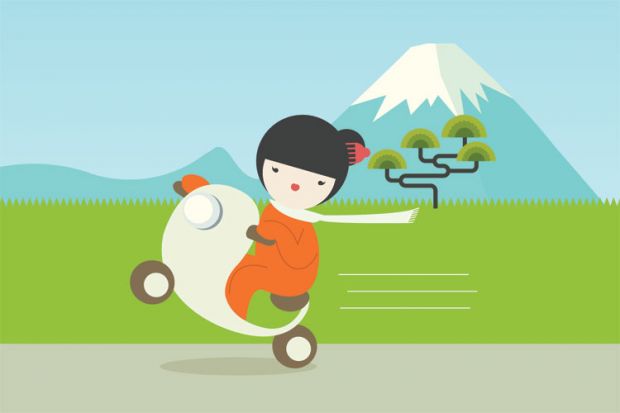With the annual number of births at 1 million and deaths at 1.2 million, it is well documented that Japan is facing a demographic crisis; it is predicted that almost half the population will be over 65 by the time today’s school-leavers reach that age. A stagnant economy, a history of rewarding seniority rather than talent and a top-down decision-making culture have all contributed to the sense that a nation that had, until 2010, the world’s second largest economy is trapped in a downward spiral from which there can be no escape.
The outlook seems bleak. But there are some who detect signs that a different future for the nation – facing a period of self-analysis in the lead-up to 2020 and Tokyo’s hosting of the Olympic Games – might be possible.
“Jinzai” is the Japanese word for human resource, and the development of global jinzai, or global talents, is one of the key aspects of Prime Minister Shinzo Abe’s blueprint for the regeneration of Japan. One element of this drive to promote a more international mindset is a government initiative to persuade young people to study overseas. Scholarships are being made available to students who are prepared to start their degrees in the autumn rather than in the spring, when the Japanese academic year traditionally begins (aligning their academic year with that of Western counterparts will afford them more scope to study abroad).
The number of students studying abroad peaked at 83,000 in 2004 and fell below the 60,000 mark by the end of the decade, according to the Ministry of Education. In 2011-12, there were just 3,000 Japanese students studying in the UK – compared with more than 11,000 from Hong Kong. The government, recognising the dangers of academic isolation, is keen to reverse the trend. Will these scholarships prove incentive enough to overcome the apparent reluctance of Japan’s brightest young people to broaden their horizons? Perhaps – but early signs suggest that success might come from a surprising quarter, with women said to make up the majority of those showing interest in the scholarships.
The gender-driven hierarchy that has been an integral element of Japanese society is far from crumbling, but there does seem to be a feeling that things are changing, albeit slowly. “Genki” has no easy English translation; “energised” or “full of life” might be close in literal terms, but a more colloquial interpretation might be “up for it”. If the promotion of global jinzai really can bring about transformation, then perhaps the bright young women of Japan are up for it with a drive that is lacking in their male counterparts.
Recalling her own time studying and working in the US, Yuko Itatsu, associate professor at one of Tokyo’s top universities, told me: “My theory is that my male peers were thrown off balance when they found that they didn’t occupy the same privileged position they had taken for granted in Japan. We felt, though, that America presented us with a level playing field where we were judged on merit rather than gender. I remember how liberating it was to discover that there were far fewer expectations as to how we should behave as women.”
Is there a genuine appetite for reform in the boardrooms and corridors of power in this fascinating and complex country? If there is, then higher education will be at the heart of it, and tomorrow’s Japan may no longer be a country for old men.

